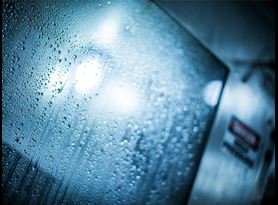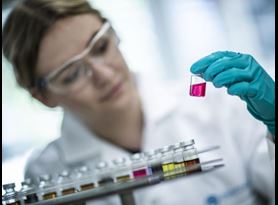The Advantages of Using High Performance Liquid Chromatography - Mass Spectrometry for Sulfolane Analysis
Sulfolane is often utilized in processing sour natural gasses, which can inadvertently leak into surrounding groundwater and wetlands. Toxicology experts still know little about the long-term health effects of sulfolane on the human body, but research indicates sulfolane can cause toxic effects to the central nervous system at acute concentrations.
Exposure to sulfolane can occur through contaminated drinking water and food produced in contaminated soil. Testing for high concentrations of sulfolane presence is critical to protect people and the environment from potential exposure.
Sulfolane Analysis Guidelines
In 2006, the Canadian Council of Ministers of the Environment (CCME) published Canadian Soil Quality Guidelines and Canadian Water Quality Guidelines for sulfolane, including remediation guidelines often close to laboratory detection limits. With new CCME guidelines, along with the high water solubility of sulfolane, posed new challenges for the environmental testing industry.
Various methodologies for sulfolane analysis have been developed over the years, such as Gas Chromatography-Mass Spectrometry (GC-MS) and Gas Chromatography - Flame Ionization Detection (GC-FID). Recent technological advances have made a new method possible, one that rises to sulfolane’s many analytical challenges: the High-Performance Liquid Chromatography-Mass Spectrometry (HPLC-MS) method.
The Advantages of HPLC-MS
HPLC-MS allows for faster measurements with a smaller lower detection limit and has several advantages over its older counterparts:
-
Direct Injection of the Sample
- HPLC-MS enables a direct aqueous injection of the sample, eliminating the need for sample extraction and concentration as GC-MS or GC-FID would require. Furthermore, it has better ion recovery than either GC-MS or GC-FID, making it more accurate and precise.
-
Combined Amine and Sulfolane Scans
- Often, programs requiring sulfolane analysis will also require amine testing, particularly DIPA (diisopropylamine). Many testing companies require two separate runs, one test for sulfolane and one test for amines. With Element’s HPLC-MS instrument, samples can be tested for both analytes simultaneously, allowing us to deliver your test results faster.
-
Sample Size Reductions
- Element recently introduced an additional change to improve sulfolane analysis by resizing all of the sample bottles, making them more compact. Smaller bottles reduce the number of coolers environmental consultants take into the field and cuts down on the sampler’s time bailing water. This change cuts back on the volume of samples sent to our lab, reducing shipping costs.
-
Sampling Parameter Element Bottle Competitors Routine 250 mL Plastics 500 mL Plastic
1x Nitrate/Nitrine Bottle
Sulfolane 2x 40 mL Vial 1x 500 mL Amber Amines Included in the sulfolane vials 1x 500 mL Amber
The Element Advantage
Our testing experts have years of experience in environmental analysis and testing. Using Element’s HPLC-MS instrument, we provide more precise analysis than the traditional GC-FID or GC-MS instrument commonly used in the industry, with significant cost savings from reduced sample sizes and scan frequency. With Element, you benefit from more convenient, more advanced testing, for a better price.
To learn more about chemical analysis or environmental testing services, contact our experts today.
Find related Resources
More from Element

Environmental Testing
Element can simulate a wide variety of environmental conditions to recreate those encountered by products, parts, test components, or systems in field use.

Oil & Gas
Element's global platform of laboratories offers advanced services designed to test and qualify materials intended for use within the environments of the future.

Soil Testing
Find out how we help our customers to meet their regulatory requirements and achieve maximum crop quality and revenue through a better understanding of soil fertility, nutrient content and the presence of potentially harmful organisms in their soil.

Water Testing Services
Find out how we help our customers to the legal and regulatory requirements for drinking water, ground water, surface water and waste water.

